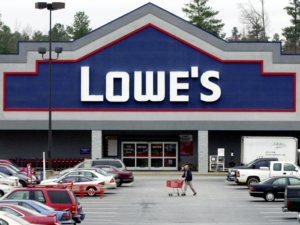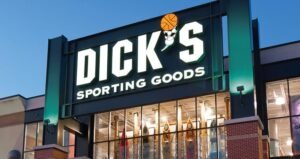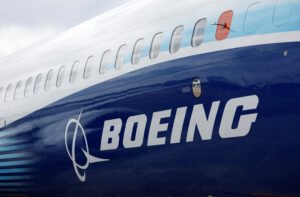Jump Ahead To :
Introduction to Inventory Cost
Inventory, that amalgamation of products and goods waiting patiently on warehouse shelves or in store backrooms, holds a mystifying power over businesses. It represents potential profit, customer satisfaction, and operational efficiency.
However, beneath the surface lies a complex web of expenses that can make or break an organization’s bottom line. Hence, understanding inventory cost becomes paramount for any shrewd entrepreneur or manager.
Unraveling Various Types of Inventory Cost
At its core, inventory cost refers to the expenses incurred in acquiring and retaining inventory until it is sold or consumed. It encompasses a range of factors that must be accounted for when determining the true financial impact of managing stock. From the initial purchase cost to holding fees, ordering expenses to stockout losses – comprehending these components allows businesses to make informed decisions and optimize their operations.
To truly grasp the multifaceted nature of inventory cost, it is crucial to explore its different dimensions. The most prominent types include purchase cost, holding cost, ordering cost, shortage or stockout cost, and lifecycle or carrying cost. So, let’s dive deeper into learn more about different types of inventory cost!
Purchase Cost
The Price You Pay for Your Goods
When managing inventory, purchase cost is a fundamental aspect to consider. Put simply; purchase cost refers to the amount of money you shell out to acquire goods for your business. Whether you’re purchasing raw materials, finished products, or other items essential for your operations, understanding and effectively managing this cost is crucial.
There are several factors that influence the purchase cost of inventory. Market conditions play a significant role in determining prices and so do the supply and demand fluctuations. Economic trends can cause prices to rise or fall and the quality of the goods can impact their price tag severely.
To illustrate this further, let’s take an example from the tech industry. Say you run a small electronics store and want to stock up on the latest smartphones. As new models arrive on the market, older ones become less in demand and decrease in value. This means you can negotiate lower purchase prices from suppliers looking to clear out their inventory.
Holding Cost
Calculating Every Penny It Takes to Keep Your Inventory
Holding cost refers to all the expenses incurred while storing and maintaining your inventory until it’s sold or used in production. These costs encompass more than just renting a warehouse or storage space; they include various components that often go unnoticed.
Storage costs are one major factor contributing to holding costs. Renting warehousing space or utilizing self-storage facilities incurs monthly fees that need careful consideration during budgeting exercises.
Insurance also plays a role in holding costs since it is necessary to protect against potential losses due to theft, fire, natural disasters, or other unpredictable events. Moreover, additional expenses are related to handling and maintaining inventory, such as employee wages in organizing and managing stock.
Calculating holding costs requires careful consideration of all these elements. By understanding the true cost of holding inventory, businesses can make informed decisions on carrying optimal stock levels and ensure they are not tying up excessive capital in slow-moving or obsolete items.

Ordering Cost
Making Smarter Choices to Minimize Expenses
Ordering cost refers to all the expenses incurred when placing an order for new inventory. While it may seem simple, several factors impact this cost, extending beyond the goods’ price.
Transportation costs play a significant role in determining ordering costs. Whether you’re importing goods from overseas or receiving deliveries from local suppliers, shipping fees, customs duties, and other transportation-related expenses can quickly add up.
Administrative expenses are another contributing factor that should not be overlooked. Costs associated with processing orders, handling paperwork, and coordinating with suppliers must be factored into the overall ordering cost equation.
To minimize these costs, businesses can consider implementing strategies such as consolidating orders to reduce transportation expenses or streamlining administrative processes through automation and efficient communication systems. By optimizing ordering processes and minimizing associated expenses, companies can enhance their bottom line while maintaining healthy inventory levels.
Shortage or Stockout Cost
The Price of Empty Shelves
Shortage or stockout cost refers to the negative impact on customer satisfaction and sales revenue from running out of stock. When customers cannot find what they need when they need it, frustration ensues, leading to the potential loss of future business opportunities.
The impact on customer satisfaction cannot be disregarded, as it directly affects brand loyalty and repeat purchases. Customers who experience stockouts may turn to competitors for their needs instead.
From a financial perspective, stockouts have a tangible impact on sales revenue. Any lost sales during periods when products are unavailable lead to missed opportunities for generating profit.
To mitigate shortage costs, businesses can employ inventory management techniques like just-in-time (JIT) or implement robust demand forecasting systems. By optimizing inventory levels and accurately predicting customer demand, companies can reduce stockout likelihood, keeping customers and finances happy.
Lifecycle or Carrying Cost
Navigating the Expenses Across Your Inventory’s Journey
Lifecycle or carrying costs encompass all expenses incurred throughout an item’s lifecycle within your inventory. From the moment it is purchased to its eventual sale or obsolescence, each stage carries its own expenses that should not be overlooked.
One major component of these costs is depreciation. Over time, certain items may lose value due to wear and tear, technological advancements, or changing consumer preferences.
Tracking these changes in value is vital to understanding the true cost of holding inventory. Obsolescence is another factor contributing to lifecycle costs.
In fast-paced industries like technology or fashion, where trends change rapidly, products can become outdated quickly. This can result in significant losses if businesses fail to adapt and clear out obsolete stock.
Reducing lifecycle costs requires effective forecasting and inventory management practices. Companies can minimize potential losses associated with depreciation and obsolescence by continuously monitoring market trends and consumer demands.
Strategic decisions such as offering discounts on aging products or implementing product lifecycles that correspond with market demands can also reduce these expenses. Understanding different inventory costs is crucial for businesses aiming to optimize their operations and maximize profitability.
By delving into purchase costs, holding costs, ordering costs, shortage costs, and lifecycle costs, organizations gain valuable insights into where their money goes throughout the inventory management process. Armed with this knowledge, businesses can make informed decisions regarding pricing strategies, supplier selection, and stock levels optimization while ensuring customer satisfaction remains a top priority.

Significance of Analyzing Different Types of Inventory Costs
Understanding inventory costs is crucial for making informed and strategic decisions when running a business. By analyzing these costs, businesses can gain valuable insights into their operations and make sound choices that positively impact their bottom line. Let’s explore some benefits of a deep understanding of inventory costs.
Firstly, comprehending inventory costs allows businesses to optimize their purchasing strategies. By considering purchase and ordering costs, companies can identify opportunities to negotiate better deals with suppliers or find more cost-effective sourcing options.
This knowledge empowers decision-makers to make informed choices regarding bulk purchases, quantity discounts, or alternate suppliers. Furthermore, understanding inventory costs aids in managing cash flow effectively.
Excessive inventory ties up capital that could be allocated elsewhere in the business. By calculating the holding cost, which includes storage expenses and insurance premiums, companies can strike a balance between having enough stock to meet demand without excessively draining their resources.
Moreover, analyzing different types of inventory costs provides insights into overall profitability. For instance, shortage or stockout cost refers to the potential revenue loss from insufficient stock when customers demand it.
By implementing accurate forecasting techniques and monitoring sales trends closely, businesses can mitigate stockout costs and ensure customer satisfaction while maintaining healthy revenue streams. It is also worth noting that understanding the lifecycle or carrying costs assists in evaluating whether certain products are worth carrying in the long run.
Impact on Profitability, Cash Flow & Overall Business Operations
The impact of analyzing different types of inventory costs extends beyond individual decision-making processes. It directly influences a business’s overall profitability, cash flow, and smooth functioning. Inventory costs significantly affect profitability as they directly impact a company’s margins.
By actively managing and reducing purchase costs through effective negotiation or sourcing strategies, businesses can enhance their gross profit margins. Similarly, minimizing holding costs by optimizing storage space or implementing efficient inventory management systems contributes to higher net profit margins.
For example, if a company realizes that high lifecycle costs for certain products are due to an ineffective production process or low demand, it may prompt them to reassess manufacturing methods or invest in research and development efforts. Analyzing different types of inventory costs offers numerous benefits for decision-making processes while also impacting profitability, cash flow, and overall business operations.

Inventory Costing Methods Examples from Various Industries
Manufacturing sector
Imagine a textile manufacturer that relies heavily on imported raw materials. Fluctuations in exchange rates, transportation expenses, and customs duties all contribute to the purchase cost of these materials.
By carefully analyzing this cost factor, the manufacturer can make informed decisions about sourcing suppliers, negotiating contracts, or even exploring alternative materials to reduce their purchase costs. Holding costs also play a significant role in the manufacturing sector.
Take an automobile assembly plant as an example. High storage expenses for large inventories of car parts and components can have a detrimental effect on profitability. By implementing efficient inventory management systems and optimizing warehouse space utilization, the company can reduce holding costs associated with storage fees, insurance premiums, and potential stock obsolescence.
Ordering cost is another critical consideration in manufacturing. Let’s say there’s a furniture manufacturer that frequently outsources certain components like handles or upholstery fabric. Each time they place an order with suppliers for these items, administrative expenses such as processing paperwork or tracking shipments add up as ordering costs increase.
Implementing strategies like consolidating orders or utilizing electronic procurement systems can help minimize these expenses while streamlining operations. Moreover, shortage or stockout costs can severely impact manufacturing businesses’ efficiency and customer satisfaction levels.
By regularly assessing the lifecycle costs of these assets, manufacturers can make informed decisions about when to upgrade or replace equipment, ensuring optimal performance while minimizing unnecessary expenses.
Retail sector
Managing inventory costs is particularly critical in the retail sector due to intense market competition and rapidly changing consumer demands. Let’s explore some examples that highlight the significance of effectively controlling inventory costs for retail businesses. Consider a fashion retailer aiming to keep up with fast-paced trends.
It is crucial for them to manage their purchase cost effectively by negotiating favorable terms with suppliers or exploring options like direct sourcing from manufacturers. By doing so, they can maintain competitive pricing strategies while still ensuring quality products.
Holding cost optimization is also vital for retailers with physical stores. Large retail spaces require effective space utilization strategies to maximize profitability while minimizing storage expenses.
Implementing robust inventory management systems that track stock levels accurately and provide real-time insights empowers retailers to reduce holding costs associated with excess inventory and potential stock spoilage risks. In a competitive market, ordering cost becomes even more significant for retailers striving to offer customers attractive prices without sacrificing quality.
By leveraging technologies such as electronic point-of-sale systems or automated replenishment systems linked with suppliers, retailers can streamline their ordering processes, reducing administrative expenses and gaining a competitive edge through quicker order fulfillment. Shortage or stockout costs are particularly damaging in the retail industry due to lost sales opportunities and potential damage to brand reputation.
By understanding how purchase cost, holding cost, ordering cost, shortage or stockout cost, and lifecycle or carrying cost impact their operations and profitability, businesses can make informed decisions about sourcing materials/products efficiently, optimizing storage space utilization, streamlining ordering processes, minimizing stockouts through accurate demand forecasting techniques, and effectively managing obsolescence risks. This strategic approach ultimately leads to improved productivity, customer satisfaction levels, and overall business success in highly competitive markets.

Conclusion
Comprehending the intricacies of different types of inventory costs is vital for businesses to thrive. Organizations can optimize their financial performance and ensure smoother operations by analyzing and getting familiar with various types of inventory cost they may come across.
Implementing cost-efficient inventory costing methods for manufacturing or adopting best practices in inventory management across various industries can lead to enhanced profitability and a competitive edge. With proper attention to these details, businesses can confidently navigate the ever-changing landscape of inventory cost accounting.
To learn more about the broader distribution process , checkout our in depth guide on product distribution!






